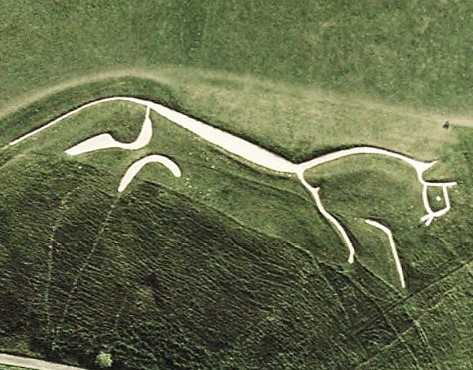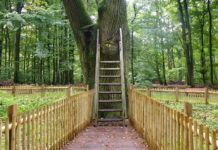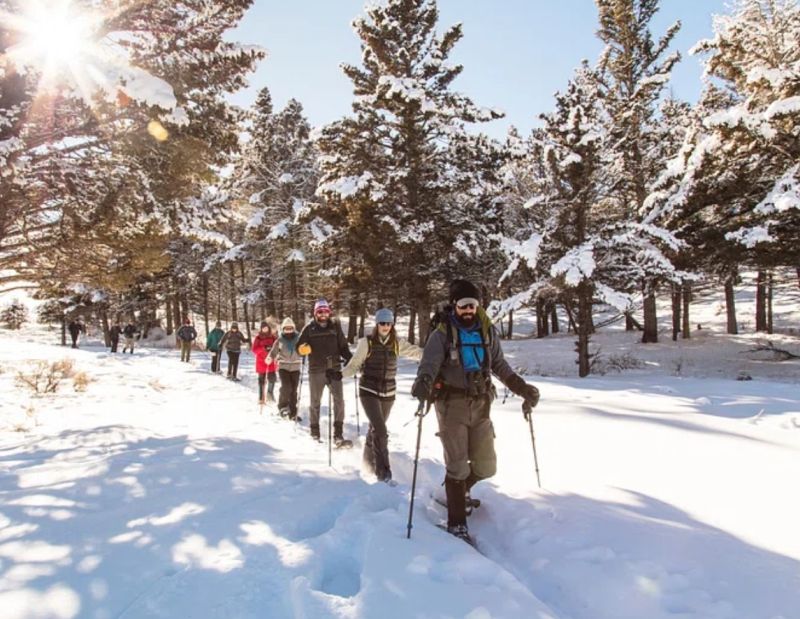The Huffington White Horse makes it challenging to watch from close quarters (although it can be viewed pretty well from some parts of the B4507), but it is seen significantly better from most locations of the Vale of the White Horse.
Numerous organizations (mainly with ties to Oxfordshire or Berkshire) utilize the Uffington White Horse as a symbol, and it may be found in a wide range of literary, artistic, and musical creations. The horse is similar to horses depicted on Celtic coinage, the currency of the pre-Romano-British population, and on the Marlborough Bucket (an Iron Age burial bucket found in Marlborough, Wiltshire), and is thought to represent a tribal symbol, possibly connected with the builders of Uffington Castle.
Uffington White Horse is without a doubt the oldest and most famous hill figure in Britain. The Oxford Archeological Unit recently dated the figure to 3000 years old, which is 1000 years older than previously believed. Its proximity to Uffington Castle may have served as an inspiration for the creation of the first Westbury horse by Bratton Camp, which also faced right. The hill figure first came into existence in the 1070s, and the first documented mention of the horse itself dates to 1190 AD.
Over its lengthy history, the White Horse has been meticulously cleansed of vegetation on occasion. The only time grass has been added to the figure is when it was covered during World War II out of concern that enemy planes may use it as a visual landmark for navigation. The recognisable image was covered over with turf and hedge trimmings during World War II to prevent Luftwaffe bombers from utilizing it for navigation during bombing assaults. William Francis Grimes, a professor of archaeology from Wales, made the discovery following the war.
Because of the horse’s distinctive features—it is a very long, sleek, disjointed figure—some people think it symbolizes the mythological dragon that St. George killed on the nearby Dragon Hill, or even his horse. Others think it symbolizes the Celtic horse goddess Epona, who is known to symbolize death, healing, and reproduction and may have been made to be worshipped in practices.
The scouring of the horse is thought to have been an observance of faith in later times, giving more trustworthiness to the figure being of religious origin. Others believe that it commemorates Alfred’s triumph over the Danes in 861 AD or that Hengist created it in the 7th century in the image of a horse on his standard, but recent scientific data regarding its age seems to discount these more modern theories.
Moreover, similar horses feature in Celtic jewelry, and there is also evidence for horse devotion in the Iron Age. The finding of numerous Iron Age coins featuring pictures of horses similar to the Uffington White Horse lends credence to the theory that the horse is older than the seventh or eighth century.
With the possible exceptions of the first Westbury horse, the Osmington horse, and the more recent Bulford Kiwi, all other horses and animal hill figures face left. This makes the horse unique. The earliest known record of the White Horse dates from Abingdon Abbey in the late 12th century AD; nevertheless, White Horse Hill had been mentioned a century earlier. The most notable feature in the area is the Iron Age Uffington Castle, which is perched atop a knoll just above the White Horse.

Though its intended use as a representation of a horse or some other animal, like a dog or saber-toothed cat, has long been disputed, the chalk figure has been identified as a horse at least since the eleventh century. There are numerous records from this era that include a very good historical record from the 18th century AD, indicating that the horse’s appearance has not changed much from that time to the present. There have been times, like in 1880 AD, when the horse became invasive and was in danger of disappearing like some of the other hill figures, but this is no longer a possibility because English Heritage is looking after this ancient monument.
The best view is unquestionably from the air, but since we are not able to use the air, the greatest perspective is from about a mile to the north, though the outlook from Dragon Hill is not too bad. It is also the largest of the horses, measuring about 374 feet in length and 110 feet in height. It is made up of chalk-filled trenches that are 2-3 feet deep, 5–10 feet wide, and only a few feet above the hill’s natural chalk.
The National Trust maintains the horse in outstanding condition, with its well-defined edges partially consolidated with concrete (albeit cleverly hidden) and a top edge reinforced with polypropylene netting. Its chalk-white surface is well-compacted, and erosion is restored as needed. Thomas Hughes, the writer of Tom Brown’s Schooldays, wrote The Scouring of the White Horse, which was published in 1859 and referred to as “a collective travel book and record of regional history in the guise of a novel, sort of.” It describes the customs surrounding the annual renovation of the White Horse. Hughes was born in the neighboring town of Uffington.
The ice-cut terraces to the west of this area are known as the “Giant’s Stair.” It is believed by some that these terraces, which form the base of this valley, were formed naturally and were used for cultivation throughout the Middle Ages. Also adjacent to the Blowing Stone is a perforated sarsen stone located in a garden near Kingston Lisle, 1.2 miles away. When blown through, the stone emits a melodic tone. A celebration used to be conducted in honor of the cleaning process called the Scouring of the White Horse; various sports were played out, and fierce competition was kept up between the locals and those from other regions of England as well as between the residents of the nearby villages.
The earliest known celebration of this kind occurred in 1755 and ended in 1857, when more than 30,000 people attended the event. Tom Hughes’ semi-fictionalized account of his visit to the 1857 celebration describes learning that the nearby towns had been scouring the White Horse for centuries, dating back to the Saxon era. Accessible parking is available nearby at Woolstone Hill and Whitehorse Hill.
Read More: The Mysterious Stone Jars of Laos







